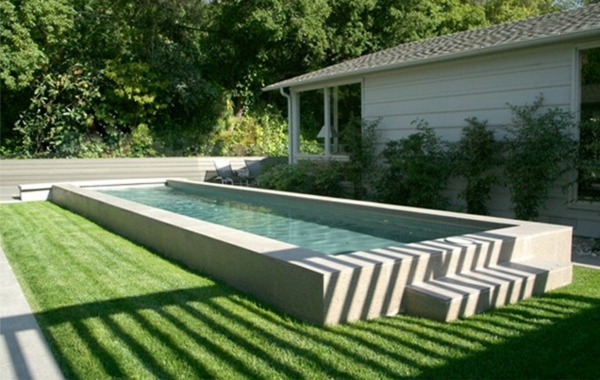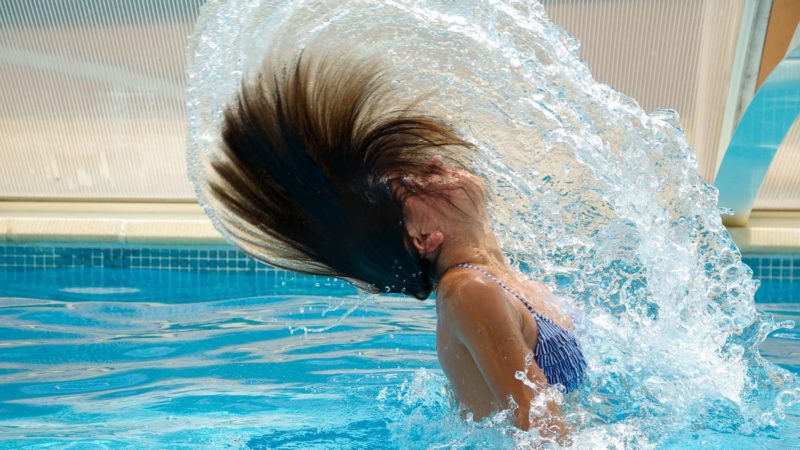Know More About The Lap Pools

The lap pool is a swimming pool that is primarily installed for health and fitness purposes. The lap pool is the best solution for shallow or narrow residential lots in which the homeowner desires the swimming pool to get often exercise in the privacy of your personal backyard. Moreover, narrow lots also work as the focal point in the backyard, particularly when seen from the house. The residential lots have become small lap pool which has gained popularity.
What Is A Lap Pool?
Lap swimming pools are narrow, long, and typically rectangular pools. They are ideally at least 45 feet in length.
Early Designs
The ancient Romans and Greeks built pools, most likely in the form of a rectangle for athletic training in palaestras, for nautical games, and also for military routines. The personal pools of Roman rulers were filled with fish known as piscinas.
While other lap pools in several forms and for several purposes. California-based landscape design company Baldon/Galper Associates who have brought the lap pool to California with the designs in the early 1970s.
Baldon’s Design
Baldon grew up in Washington state, and he said that the narrow, long irrigation trenches that run between the apple orchards where he gets the idea for the lap pool. However, Baldon’s mother did not allow her daughter to swim in the Washington irrigation trenches, and the designer went on to make some of the most amazing lap pools to enjoy and swim.
With a serious athletic swimmer in mind, Baldon believed that the pool which was only eight feet wide that would allow someone to do swim strokes comfortably.
The building, maintaining, and heating of the lap pool is similar to other pools. However, this type of pool can be used as a spool if it is equipped with a machine that makes the strong artificial current. This allows the swimmer to swim against the continuous flow of water without going forward or needing to turn at the ends of the pool.
Types Of Lap Pools
Unlike the traditional pools or plunge pools, there is not much design flexibility with the pool. It is a narrow, long rectangle, with length and width the only variables. Many contractors recommend narrow internal steps, better offset entry steps that do not block the swimming area.
As for the pool, it can be constructed in vinyl, acrylic sheet, or concrete. Other decisions for the lap pool include whether to go with the chlorine or saltwater pool and whether you spend extra to heat the pool.
Pros And Cons Of Lap Pools
Some benefits of the pool include:
- Work in the shallow or narrow backyard.
- It is best for lap swimmers who will use it constantly.
- Can be installed in vinyl, acrylic sheet, or concrete.
- It can be customized with heat or the resistance current.
- With lighting and landscaping, it can be a beautiful backyard feature.
Some downsides of the lap pool include:
- The length might be limited by the yard materials or size.
- It is less versatile for family relaxing and fun.
- There are fewer options for sitting and steps areas and the other features.
- Little to no cost savings compared to the traditional ground pool.
- It requires fencing or a gate like the normal pool, depends on the local regulation.
- If the lap pool is heated, then it can cost higher on gas or electric bills.
Lap Pool Installation
The lap pool is a skinny, long version of the traditional pool, and lap pool installation steps are about the same. The pool requires skimmers, filters, pool pumps, and excavation. You will probably ant the pool deck either in cement, wood, or tile, also some landscaping to beautify the pool area.
If you have got advanced construction skills and access to heavy-duty earth moving equipment, then you can consider installing the DIY pool kit.
Lap Pool Maintenance And Care
There is some difference in the ongoing expense and maintenance of lap pools compared to the traditional pools. Moreover, lap pools have lesser beauty features like waterfalls, and there might be lesser things that can go wrong with them.
If you do not want to use a hand vacuum for the pool, then you can purchase a robot swimming pool cleaner. Or you can hire a professional service to maintain the pool.
Lap Pool Cost Considerations
When constructing or planning the pool, think about the following:
- If you are using the pool for swimming laps, then consider entering the pool via niche or offset wall stairs with the metal grip rail rather than using internal steps.
- If there is some room, consider adding the integrated spa. It extends the pool’s enjoyment and can economize on space if you desire both the hot tub and the backyard lap pool.
- The surrounding deck is an integral part of the design, so think about the materials you would like to use: concrete paving, tile, or wood. The normal space around any swimming pool is five to eight feet wide on all sides. This permits simply to access, prevents the garden from becoming waterlogged, and keeps trash out of the water. Moreover, also allows simpler maintenance.
- When will you use the pool? In the morning, afternoon, or evening? Think about this because it can affect how you heat the pool. If you plan on using it in the summer or spring, then this can make a difference when building the heating unit into the pool.
- Get the cover to contain the heat in the pool, which makes it more efficient and reduce the utility bill. This style also includes fully automated thermal blankets.
Final Words
There are normally two types of people who install lap—serious swimmers or those with shallow or narrow backyards. Whichever category you go for, you should go through the steps mentioned above.
Moreover, if you want your lap pool to look more beautiful, then check out some of the best outdoor deck lighting ideas. If you find this information useful, drop a comment below this section.

